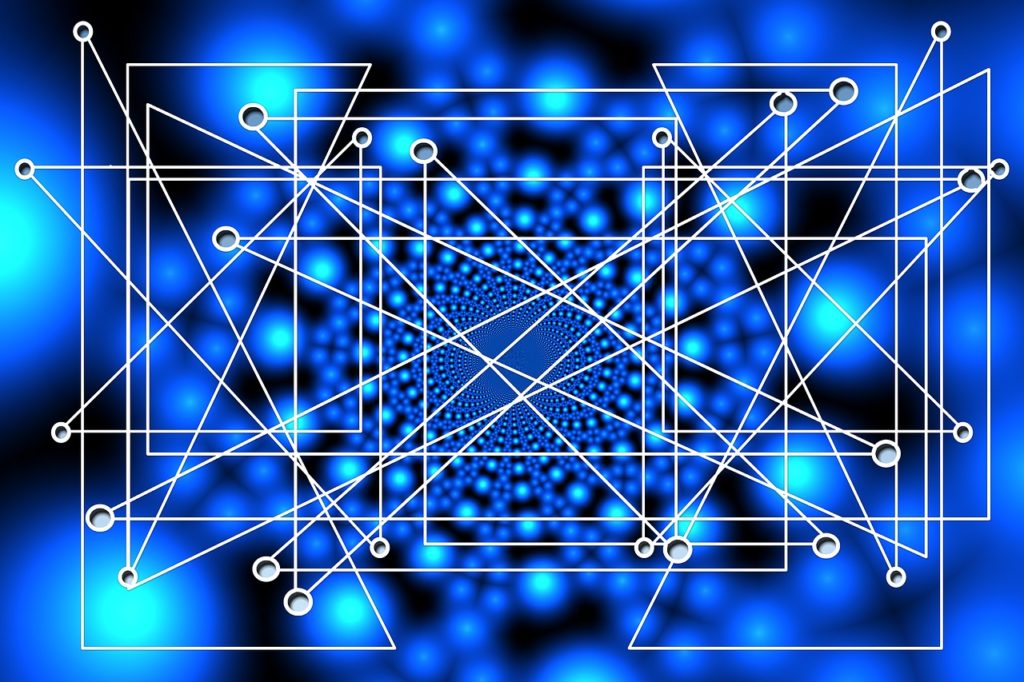Atoms make molecules and molecules make proteins, like the keratin in your hair or hemoglobin in your blood. These proteins interact in complex ways to create movement, metabolism, consciousness, and everything we call life. But there is a vast divide in complexity between the simplest amoeba and a human being. How do those chemicals self-assemble to breathe and communicate? Information control is one of the key hallmarks of life, but we don’t know a lot about how information is organized in biology, or how information is held in chemistry. There is a fascinating complexity gap that is begging to be understood, and this is why Sara Imari Walker does science. I got the chance to chat with her about ways of thinking about this complexity gap to further our understanding on this question.
When trying to understand how the interactions of life came to be, Dr. Walker and her lab start by looking at the networks of life. There are gene networks that control how and when our body makes proteins, protein networks that create tissues and organs, and organ networks that create individuals. Individuals interact to create populations, and social networks of those populations form communities, and those communities form ecosystems. There are also non-living networks, such as computer networks. The big question to ask here is, what are the key parallels between a living network and a non-living network? Are there common features among these networks that will give us a universal blueprint for life?
Sara Walker and her team are investigating whether the rules that apply at one level of life also apply at all of the others. From chemistry to biology to social networks, specific shared principles should guide how information is organized and how it cycles through these stacks. If this theory of common principles can be demonstrated, we would gain a deeper understanding of the flow of information through life. This would allow us to develop an “algorithm,” or a set of instructions, that helps us understand the potential for life elsewhere in the universe. Their work is theoretical, mainly using computer models and mathematical data.
Even without knowing what life outside Earth could specifically be like, the conclusions of this thinking is fascinating. If our DNA/RNA carbon-based chemistry is the only way to create life, then we know we must find carbon in order to find life. However, with fewer restrictions, we open the possibility of what life can be. A group of scientists in the Department of Chemistry at the University of British Columbia, which Walker referenced, have started to investigate whether our DNA is the only type of molecule that can pass on information. They created synthetic molecules similar to DNA, called “XNA”, and found that with the right ingredients in test tubes, XNA copied and stored information similarly to DNA. The scientists haven’t created new life, but it shows that our life can be adapted to new chemistries if it evolved somewhere else in the universe under different conditions. Although the divide already floats in a gray area, this new finding blurs the boundary between “life molecules” and “non-life molecules”. The more we deconstruct this categorization, the more we understand about what it means for a system to be alive.
A great analogy for the evolution of life is the development of computers. The last 60 years have been a game of catch-up between information storage (genetic chemistry, hardware) and information function (phenotype, software). Computer hardware underwent a series of upgrades, transforming the standard from vacuum tubes and punched cards in the 1940s to the solid-state drives we have now, which are billions of times more effective. Along the way, software upgraded as well to keep up with the advancing storage capacity. But a leap in hardware did not necessarily mean a jump in software. For example, current computers may not be fast enough for current software. An advance in each technology pushed the other forward. Hardware and software continue to co-evolve to become more efficient and robust with time, but they do not improve at the same rate.
We can liken this hardware-software coevolution to the development of our own genetic information storage, DNA, evolving into more complex functions of life, like the development of blood circulatory systems or brain intelligence. Information processing and control in living systems means that our biochemistry is the software, and the way our bodies work, look, and think, is the hardware. The changing needs and capabilities of the software and the hardware influence the development of one another. This unique way of thinking can change the way scientists understand the origins of the chemistry that makes life work.


